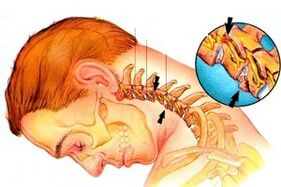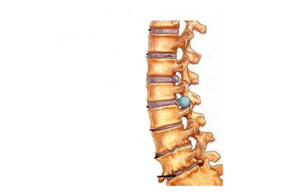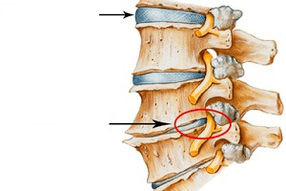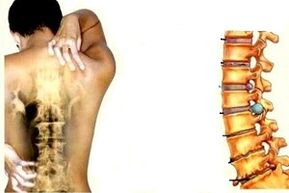
Diseases of the musculoskeletal system are one of the most common diseases on earth.Few people are able to avoid them, especially after 40 years, though experts admit that spine, muscles and joint problems have become "young", and very young people are increasingly complaining of pain.
This is due to the lifestyle that has already become familiar to many: inactivity, prolonging one position (most often beyond gadgets and monitors), lack of physical activity.As a result, posture collapses, salts and other harmful substances accumulate in the body, the functions of the musculoskeletal system collapse, and as a result, the internal organs can deform.
The most common of these diseases is osteochondrosis, which affects both older and quite young, and osteochondrosis - problems with lumbosacral and cervical spine.The second most common type of osteochondrosis is the cervix, an unpleasant disease and, in addition, it is progressive, without treatment, it greatly worsens the lifestyle, even before the disability point.This means that you should immediately acknowledge the symptoms of this disease and immediately contact the orthopedist or spine for treatment.
How does cervical osteochondrosis develop?
If a person leads a seductive lifestyle or, because of their profession, is in the same situation for a long time, then the risk of meeting osteochondrosis is very high.As the disease develops, changes occur in the intervertebral discs, they become deformed and alter their structure.
Intervertebral discs are located between the vertebrates, their task is to maintain the spine, flexible and durable.There are seven vertebrates on the neck, with the help of which he supports and rotates, the neck, etc.The cervical vertebrates are very close to each other, so they are injured and moved from even little physical effort.The danger of the disease is that the nerve endings of the spinal nerves are affected, leaving the vessels that supply the brain to the brain.In turn, the brain does not take vital substances and this can lead to the development of many other, more serious diseases that can lead to disability and even the patient's death.
There are many causes and developments of cervical osteochondrosis.For the most common and frequent reasons, the following may be distinguished:

- Deferred metabolism in the body, in particular in the cervical region, hormonal imbalance;
- Salt deposition;
- Low physical activity, seductive lifestyle;
- Long stay in one position (computer, car management, etc.);
- Poor nutrition;
- Excess weight;
- Neck injuries and bruises;
- Hypothermia of the body.
Osteochondrosis is also found in the background of chronic diseases of the musculoskeletal system, such as scoliosis or rheumatism.
In addition, genetic predisposition to the body often causes osteochondrosis.
Whatever the causes, osteochondrosis should be treated as soon as its first symptoms appear.
Signs of cervical osteochondrosis
In this part of the spine, osteochondrosis does not always occur suddenly and suddenly.Most often, it develops slowly, and the symptoms are intense over time and their numbers increase.The more and more severely damaged the vertebrates and nerve roots are cut, the more noticeable the symptoms are.
The first symptom you should pay attention to is the pain of various strength of the cervical spine for the body's body - on the back, on the forehead, on the ears, on the forearm, on the shoulder, and.If you experience pain, you should consult your doctor to determine whether it is osteochondrosis, which is often similar to symptoms of other diseases.
Other signs of osteochondrosis
- Neck pain increases with effort or head;
- The patient feels a fist, burning or limbs;
- Headache and dizziness, breakdown, the patient may complain about darkening and flying in the eyes, noise in the ears;
- With its sharp turn, it was probably red.
Osteochondrosis is also characteristic of cervical osteochondrosis:
- Coordination violation;
- Pain in the heart;
- Visual and hearing deterioration.
Osteochondrosis varieties
Depending on the nature of the nerve pinching and the nature of the disease, doctors distinguish several syndromes:
- Spine syndrome;
- Spine artery syndrome;
- Cardial syndrome.
Root syndrome is the first pair of cervical nerve endings.The pains are felt on the neck, they wore shoulder blade, lower back, shoulder, forearm.
With spine artery syndrome, the patient experiences pulsed pain in the back or in the temples or burning pain in the neck, on the back of the head, which strengthens himself, during sleep, coughing, gives him a chest, shoulder.
With cardiac syndrome, symptoms first resemble angina pectules, but the pain does not go away after nitroglycerin is administered, lasts for several hours and can be activated during movement and deep breathing.
Symptoms of Specific Spine Damage
Treatment of osteochondrosis is prescribed on the basis of which the end of the nerve was damaged.Only eight of them are located above the cervical spine.It is possible to determine which spine is struck by the corresponding symptoms of a certain nerve spine.
Nerve ending and characteristic pain of injury

- First and second sections: sensitivity to the back, pain in the parietal and cape region;
- Three section: Neck numbing pinching, speech impairment, language sensitivity;It happens very rarely;
- Fourth section: pain and bumps in collaboration and/or shoulder, respiratory system disorder, heart pain;
- Fifth section: shoulder pain, pain in the outer surface of the shoulder, impaired limb sensitivity;
- Six and seventh sections: pain in the neck, knife, forearm, back, lower back, hands, fingers, decreased sensitivity;The most common defeat;
- Eighth section: Pain in the neck, back, elbow, with the little fingers of the limbs, due to circulatory disorders, negotiation of legs and brushes, lack of skin sensitivity and gives it to the legs.
Diagnosis and treatment of cervical osteochondrosis

To determine the diagnosis of "cervical osteochondrosis", you should consult your doctor.Many symptoms of osteochondrosis are similar to signs of other diseases, so it is important not only to start treatment with osteochondrosis but also to miss other pathologies.
In case of suspicion of osteochondrosis and signs of nerve endings, the doctor will determine radiography, data failure, surveying or magnetic resonance imaging, ultrasound with additional dopplerography and duplex scanning.
According to these studies, the nature of the pain syndrome and the integrity of other symptoms, you can determine which discs are damaged and start the necessary treatment that restores the affected vertebrates and nerve roots and does not allow complications of osteochondrosis.
Treatment is prescribed by your doctor, it is usually difficult.First of all, he should relieve symptoms of pain that, with cervical osteochondrosis, sometimes practically unbearable and spread not only to the neck but also to other parts of the body.
To do this, use painkillers in the tablets, but in case of overly severe pain, anti -anti -anti -anti -anti -anti -anti -anti -anti -anti -therapy agents, as well as warming and painkillers.
Since drugs and ointments only relieve pain and other symptoms of osteochondrosis of the neck, but do not get rid of its cause.After reducing painful sensations, the patient is prescribed massages, physiotherapy and physiotherapy.The patient shows a diet, medications that improve blood circulation and support body functions, tablets and injections, as well as chondroprotectors that promote and restore intervertebral disks.
In some cases, baths, paraffin applications, reflexology, hirudotherapy are prescribed as additional treatment for the patient.Folk methods of treating cervical osteochondrosis often also rapidly promote the patient's usual lifestyle, but they should only be used in conjunction with traditional methods and after consulting a physician, as traditional medicine may have contraindications, and its prescriptions may harm the body weakened.
Complications and Prevention of Disease

Do not forget: Treatment of cervical osteochondrosis should begin as soon as possible.The longer you get a visit to your doctor, the more difficult it will be to cure the disease and in the meantime it can lead to various complications.Osteochondrosis of the cervical spine is very dangerous in that this section has many blood vessels and nerve plexus that feeds on the brain.
Any disorder can cause brain circulation problems, neurological disorders, including migraine and hypertension, affect the heart, respiratory system, hearing, vision.
If osteochondrosis is effective, more serious consequences may occur in the form of brain ischemia, spinal stroke or radiculopathy - a disease in which processes arise on the affected spine, partially or completely reducing sensitivity and mobility.But this is not the worst, because in severe osteochondrosis, the spinal cord is compressed, which can lead to the patient's death.
Therefore, it is very important to listen to the symptoms as soon as possible and turn to a specialist who will help you return throughout life.In order to avoid a disease such as cervical osteochondrosis, you need to wrap it more, do not avoid physical activity, weight monitoring, eating properly and balanced, and also regularly visit orthopedist or spine.

























